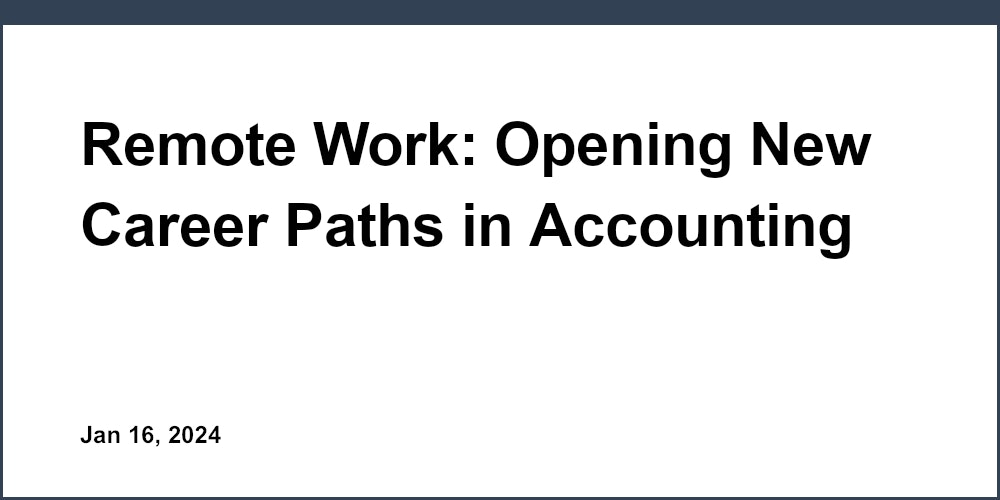Most likely every accounting firm would agree that
However, leveraging client onboarding software can help streamline this process through features like data integration, customizable questionnaires to collect client information upfront, and document management.
In this article, we will review some of the top solutions on the market - such as Xero, Practice Ignition, and Karbon - comparing the key capabilities each platform offers to enhance and optimize your firm's client onboarding experience.
Introduction to Onboarding Software for Accountancy
Vintti helps accounting firms streamline processes and reduce costs by providing specialized finance and accounting talent. As part of supporting operational efficiency, we often get asked about solutions for simplifying client onboarding.
This article will provide an overview of some of the leading options to consider. While Vintti does not endorse any specific platforms, we aim to educate on capabilities that could benefit accounting practices.
Overall, quality onboarding software should help automate administrative tasks, securely collect client data, and facilitate collaboration. With the right solution in place, firms can focus less on paperwork and more on serving clients.
When evaluating options, key aspects to consider include:
- Integration capabilities - The ability to connect with existing accounting systems and productivity software is essential for smooth onboarding and avoiding duplicative data entry.
- Customization - Every firm's processes and compliance needs are unique, so the ability to tailor forms, fields, workflows and permissions is important.
- Collaboration features - Streamlining client interactions during onboarding can reduce back-and-forth. Built-in messaging, file sharing and status tracking promotes transparency.
- Security - Validating identity, controlling access, and protecting sensitive information should be central components of any onboarding platform.
With the right solution in place, accounting practices can transform a manual chore into an automated process to improve experiences for both staff and clients. Reach out if we can connect you with specialized finance talent to further amplify operational efficiency.
How do I onboard a new client to my accounting firm?
Onboarding a new client is a critical process that sets the foundation for a successful long-term relationship. Here are some key steps accounting firms can take when bringing on a new client:
Build Rapport and Set Expectations
Schedule an introductory call or meeting to establish rapport with the new client. Use this time to:
- Explain your firm's services, areas of expertise, and typical workflows
- Ask questions to understand the client's accounting and reporting needs
- Set clear expectations around response times, communication methods, and key contacts
- Briefly walk through what the onboarding process entails
Building rapport and aligning early on expectations goes a long way towards a smooth onboarding experience.
Gather Information and Documents
Send the new client checklists and templates outlining the information you need to collect. This includes:
- Tax IDs, entity documentation, bank/CC statements
- Chart of accounts, financial statements
- Payroll details, vendor lists, asset registers
- Prior year tax returns and filings
Prepare intake forms customized to the client's needs. Conduct working sessions to discuss specific document requirements.
Configure Systems and Access
Set up the client in your accounting system and grant appropriate access permissions to contacts. Ensure proper security protocols are in place (MFA, complex passwords, role-based access, audit logs). Provide training if needed on how to navigate the accounting platform.
Review Historical Data and Books
Conduct preliminary analytics on the collected financial data and books. Identify any gaps or inconsistencies to address upfront. Use this initial assessment to guide your setup of new accounting workflows catered to the client's business.
Define Services Scope and Fees
Formalize the key deliverables, responsibilities, timelines and fees you will provide as part of your ongoing accounting services. Establish the cadence for meetings and financial reporting. Get signoff from the client before proceeding further.
Following these steps during onboarding sets up your accounting engagement for success. Let the new client relationship begin!
What is onboarding in accounting?
Onboarding is the process of bringing on a new client and getting them set up in your accounting system. It involves gathering information about the client's business, setting up their chart of accounts, importing historical data, establishing workflows, training staff on processes, and more.
Done right, onboarding ensures a smooth transition for the client into your firm's systems and services. It sets the stage for a productive long-term relationship built on understanding and efficiency right from the start.
Onboarding is also when the client gets connected with your team, so it's essential that everyone within your firm makes a good first impression as well. You could use manual bookkeeping systems or sophisticated accounting software to set up your client's accounts more swiftly.
Overall, dedicating time and resources to client onboarding results in greater client retention over the long run. Taking steps to systematize and optimize the onboarding process will enable your firm to scale while providing exceptional service. This includes having checklists and procedures in place to efficiently gather client information, configure software, and train new clients on your accounting processes.
Optimizing First Impressions: The Power of Client Onboarding
Client onboarding is a critical first step in establishing strong relationships between accounting firms and clients. Streamlining this process through dedicated software brings immense benefits over manual methods.
Automating onboarding improves efficiency, minimizes errors from duplicate data entry, and delivers superior first impressions to delight clients. As the adage goes: "You never get a second chance to make a first impression."
Saves Time Through Data Integration
Top client onboarding solutions integrate directly with leading accounting systems like QuickBooks and Xero. Rather than re-entering client details manually, critical firm and contact data flows automatically between systems.
This eliminates duplicative efforts, saving accountants significant time better spent advising clients. Some options even pull key documents like tax returns and financial statements automatically from Dropbox or Google Drive folders based on client naming conventions.
Seamless integrations facilitate faster onboarding by reducing manual processes. Staff then have more bandwidth to focus on high-value services.
Minimizes Data Entry Errors
Duplicate data entry inevitably leads to mistakes like typos or inconsistencies across systems. This hampers accuracy and causes staff frustration.
Onboarding software eliminates these risks by centralizing client data in one location, then syncing corresponding records. For example, pushing contact details and key dates to connect client records in the CRM without manual entry.
Data integrations ensure consistency, improving reliability for downstream reporting. This also reduces staff time spent fixing errors.
Enhances Client Experience
First impressions matter immensely, making organized and professional onboarding critical for client retention. Automated platforms enable firms to make outstanding first impressions.
Smooth, structured procedures guided by specialized software demonstrate competence and attention to detail from the start. Organized collection of tax documents and signed agreements also build client trust in data security and privacy policies.
Delivering white-glove onboarding sets the tone for the client relationship as one of professionalism and quality service. This enhances client satisfaction as well as referral rates from impressed clients.
In summary, dedicated onboarding software enhances efficiency through automation, minimizes errors from manual efforts, and delights clients with pristine first interactions. Forward-looking firms invest in improving these initial experiences to maximize client lifetime value over years of trusted collaboration.
sbb-itb-beb59a9
Essential Features of Onboarding Solutions
When evaluating client onboarding systems for accounting firms, there are a few key criteria to consider that can streamline and simplify the process. These include efficient document collection workflows, seamless data integration with accounting platforms, and the ability to build custom client questionnaires.
Efficient Document Collection and Management
A robust document upload portal is essential for gathering all necessary paperwork from new clients in an organized fashion. Leading solutions have automated data extraction tools that can scan documents like tax returns and financial statements, pulling key client details into accounting software without tedious manual entry. This results in considerable time savings while reducing data input errors.
Ideal features to look for include:
- Client document upload dashboard with deadline tracking
- Automated data extraction and syncing
- Cloud storage with permission controls
- Document request reminders
For example, solutions like OnboardingIQ enable custom client document collection forms that facilitate smooth data flow into QuickBooks Online or Xero.
Seamless Integration With Accounting Platforms
Choosing an onboarding platform with deep integration capabilities can eliminate double data entry while getting new clients set up in your accounting system faster. Bi-directional sync, writeback functions, and automated field mapping between onboarding and accounting tools should be key considerations.
This enables critical efficiencies like:
- Automatic client detail sync from onboarding to accounting system
- Key data like charts of accounts flows into accounting software
- Eliminates redundant manual data entry
Leading solutions like FloQast offer a QuickBooks Online integration that includes automatic field syncing and validation alerts for accelerated setup.
Tailored Onboarding with Custom Questionnaires
While pre-built client questionnaires and checklist templates help guide the intake process, customization options are equally important. Each firm has unique needs in terms of key data to collect from incoming clients across various service areas.
Choose solutions that allow creation of:
- Branded client questionnaires with logo and styles
- Conditional branching questions for personalized follow-up
- Question grouping for logical workflows
- Custom fields required for your accounting system
This enables fully tailored client intake that scales up onboarding while capturing all pertinent details to deliver the right services from day one. Solutions like FormStack Documents offer robust custom form building with templates that can powerfully transform onboarding.
Onboarding Checklists: Navigating the Essentials
Streamlining the client onboarding process is critical for accounting firms to operate efficiently. Utilizing specialized checklists enables firms to gather all pertinent information in an organized manner while establishing a positive client relationship from the start.
The Ultimate Tax Client Onboarding Checklist
A comprehensive tax client onboarding checklist acts as a roadmap to navigate this vital process successfully. Key categories to include:
- Client Information - Full legal name, date of birth, contact details, dependents, etc.
- Prior Year Tax Returns - Obtain copies to understand the client's financial situation.
- Income Sources - Employment details, rental income, government benefits, etc.
- Deductions & Credits - Mortgage interest, property taxes, medical expenses, education credits.
- Financial Assets - Bank account details, investment portfolio data.
- Life Events - Job changes, marriage/divorce, new dependents.
Having all information meticulously organized from the start enables maximum productivity during tax preparation and advisory discussions.
Customizable Client Onboarding Checklist Template in Excel
While a standard checklist works for many situations, firms often benefit from fully customizable templates aligned to their specific needs and processes.
Excel provides an optimal solution - firms can create streamlined tabs and input fields for each onboarding step, pulling data together into a centralized client record.
Key advantages include:
- Adaptability - Easily add or remove fields as required.
- Branding - Tailor colors, fonts and logos for consistency.
- Accessibility - Enable remote collaboration across devices.
- Analysis - Cross-tabulate data to uncover insights.
- Security - Password protect sensitive material.
- Automation - Set up alerts, notifications and data validation to prevent errors.
With a personalized Excel checklist template, firms can onboard clients smoothly while optimizing workflows from the very first interaction.
Comparing Top Client Onboarding Software for Accountants
We examine popular providers like Xero, Intuit Practice Ignition, and Karbon to compare options.
Xero: Streamlined Accounting Integration
Xero offers seamless integration with its accounting platform, enabling firms to easily collect client data and sync it directly into the accounting system. This eliminates manual data entry and reduces duplication of efforts.
Some key benefits of Xero's onboarding features include:
- Tight coupling with Xero accounting cuts down on manual data input and synchronization across systems
- Clean customizable client intake forms for capturing essential information from new clients
- Simple template management for adding new or updating existing intake forms
However, Xero currently has limited options for completely customizing questionnaires beyond their structured templates. This can restrict firms from capturing more niche client information upfront. For accounting practices that use other accounting software beyond Xero, the value of its onboarding integration is also diminished.
Overall, Xero delivers an efficient onboarding experience if a firm is committed to using their accounting platform. For multi-solution firms, the customization and cross-platform capabilities may feel restrictive.
Intuit Practice Ignition: Custom Client Portals
Intuit Practice Ignition excels at enabling deep custom client questionnaires that branded to match firm's website. Firms can carefully tailor questions to capture all needed client data right from the initial onboarding interaction.
Key Intuit Practice Ignition onboarding features include:
- Custom client portals with white-label firm branding
- Flexible question types like text inputs, dropdowns, checkboxes and more
- Conditional logic to show/hide questions
- Data integrations with some solutions like Xero or QuickBooks
While custom form building is a major strength, Practice Ignition currently still lacks widespread accounting software integrations beyond Intuit's own platforms. Firms using solutions like NetSuite or Sage would need to manually export and import data.
For QuickBooks-centric firms that need tailored intake processes without broader accounting tool integrations, Practice Ignition delivers flexibility and customization in onboarding.
Karbon: Comprehensive Client Onboarding
Karbon stands out by blending strong accounting integrations like Xero while enabling Practice Ignition-level tailored questionnaires. Firms can construct wide-ranging custom forms while still syncing data into multiple solutions.
Significant Karbon onboarding advantages:
- Custom client information capture with conditional logic questions
- Native connections across Xero, QuickBooks, MYOB, NetSuite etc.
- Real-time data sync eliminates manual importing or exporting
- Centralized client database spanning onboarding to ongoing management
With both robust custom form building and deep accounting platform connectivity, Karbon provides firms a centralized hub for the entire client engagement. From tailored onboarding to streamlined document management and automated workflows, Karbon aims to be an all-encompassing solution.
For firms that desire maximum configurability in data collection combined with smoother post-onboarding data synchronization, Karbon represents an extremely compelling single vendor solution. While still a relatively young product, early signs point to it becoming a category leader in future years.
Final Thoughts: Selecting the Right Software
When selecting onboarding software, it's important to prioritize accounting integrations, ease of customization, and organized workflows to enhance new client setup.
Here are a few key things to consider:
Seamless Accounting Integrations
Choose software that easily syncs client data and documents to your accounting platforms. This avoids duplicate data entry and ensures information flows accurately between systems. Prioritize solutions that integrate directly with popular accounting software like QuickBooks Online, Xero, and NetSuite.
Flexible Customization
Look for the ability to customize questionnaires, data fields, templates, and workflows to match your firm's specific needs. The software should adapt to your processes rather than the other way around. This allows you to configure the solution to capture all necessary client information upfront.
Structured Onboarding Checklists
Opt for solutions with structured onboarding checklists to keep new client setup organized. Checklists should guide your team step-by-step through gathering documents, entering data, assigning tasks, and verifying information. For accounting firms, tax-specific checklists are ideal. The checklists should also sync across devices so staff can collaborate from anywhere.
Prioritizing these key capabilities will help streamline new client onboarding, improve data accuracy, and enhance the client experience. Taking the time to evaluate options and select the right software for your firm pays dividends.




